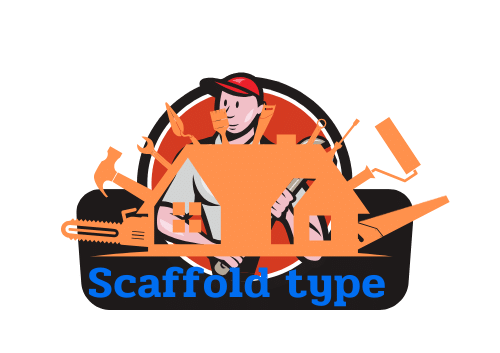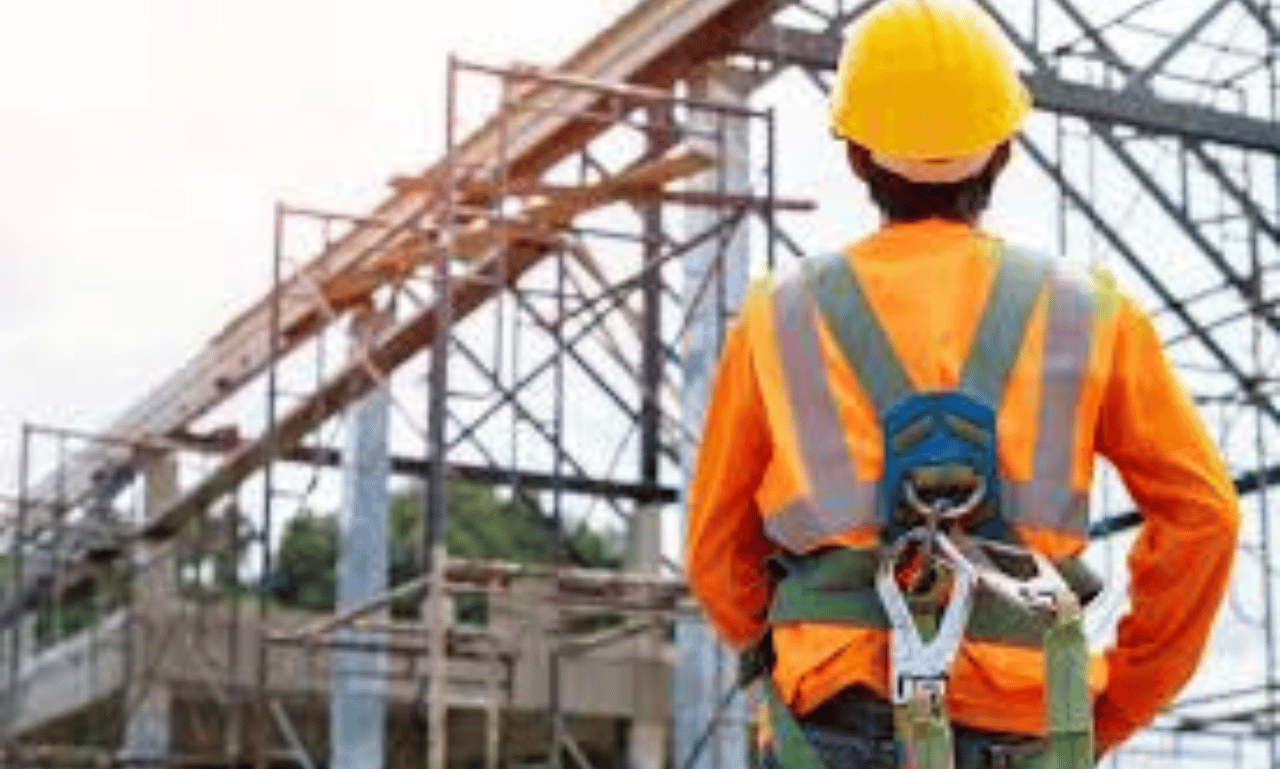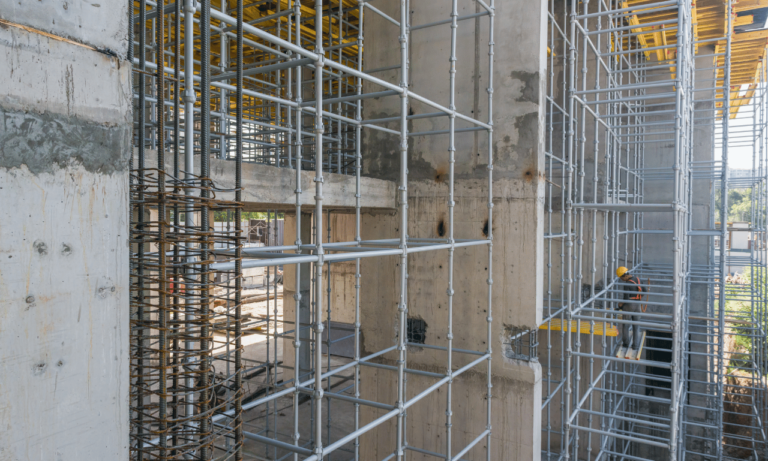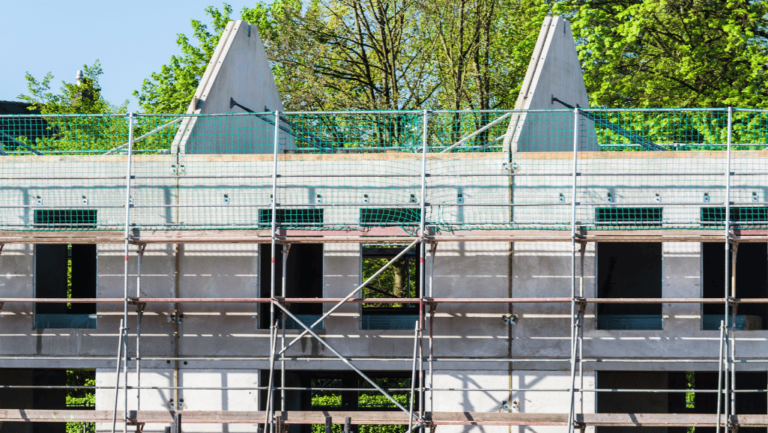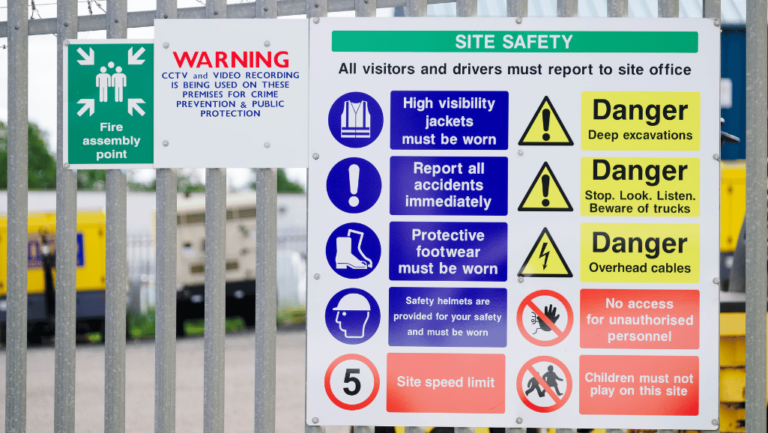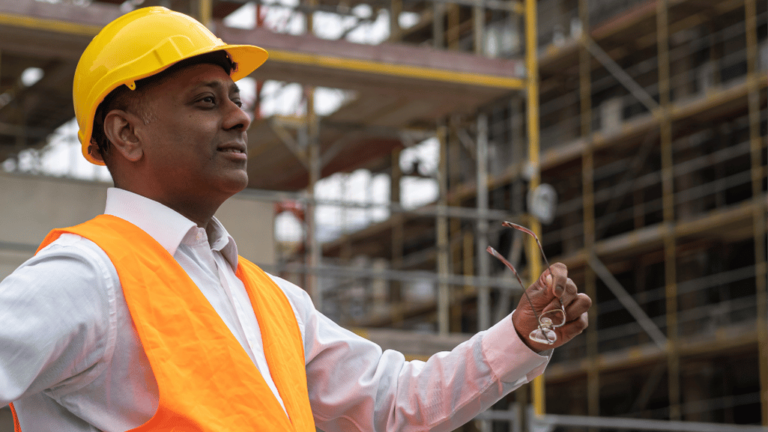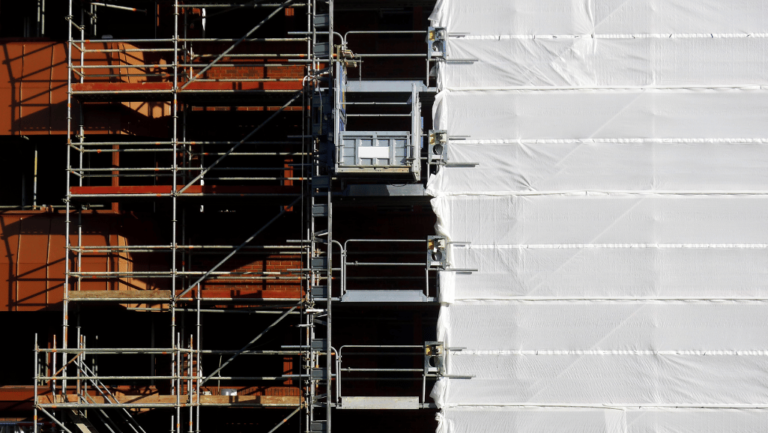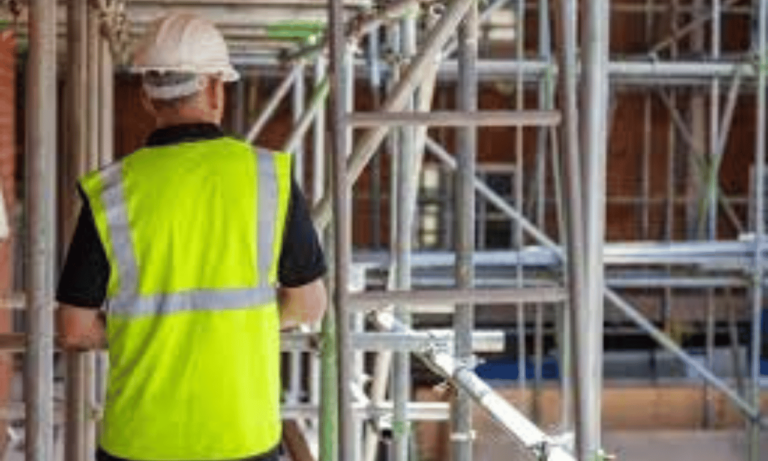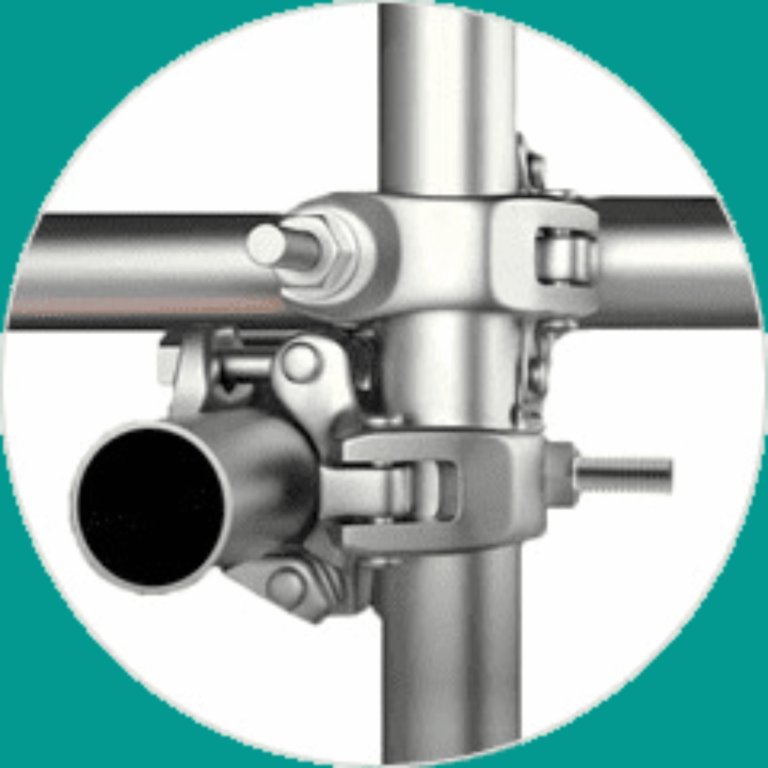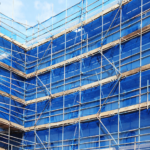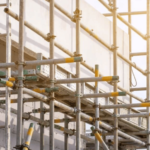Phone:
(+65)8319-0742
Construction sites can be dangerous environments, with workers exposed to various hazards on a daily basis. One critical aspect of construction safety is scaffold fall protection. Implementing proper fall prevention measures not only ensures the well-being of workers but also complies with the Occupational Safety and Health Administration (OSHA) regulations. In this article, we will explore the importance of scaffold fall protection, the risks associated with scaffolds, OSHA regulations, essential fall protection systems, personal protective equipment (PPE), training and education, regular inspections, and maintenance.
Key Takeaways:
- Scaffold fall protection is crucial for ensuring worker safety on construction sites.
- Compliance with OSHA regulations is essential in implementing effective fall prevention measures.
- Understanding scaffold hazards is key to mitigating risks and preventing accidents.
- Employers should utilize various fall protection systems, such as guardrails and safety nets.
- Proper PPE and adequate training are vital in enhancing fall prevention efforts.
Understanding the Risks: Scaffold Hazards
Before implementing fall protection strategies, it is essential to have a comprehensive understanding of the potential hazards associated with working on scaffolds. Recognizing these hazards is crucial for maintaining scaffold safety and ensuring workplace safety for all workers involved.
Below, we have outlined some common scaffold hazards that pose risks to worker safety:
Scaffold Hazards
- Falls: Falls from scaffolding are the most significant risk, often resulting in severe injuries or fatalities. Factors contributing to falls include unstable scaffolding, improper use of fall protection equipment, and lack of proper guardrails.
- Collapse: Scaffold collapse can occur due to poor construction, overloading, or inadequate maintenance. Collapses can lead to workers being trapped or falling from heights, causing serious injuries or death.
- Electrocution: Working near power lines or using tools/equipment incorrectly can expose workers to electrocution hazards, especially on metal scaffolding structures.
- Struck-by Hazards: Falling objects, such as tools or materials, can pose a significant danger to workers on scaffolds if they are not properly secured or if workers are not wearing appropriate head protection.
- Chemical Exposure: In certain construction projects, workers may be exposed to hazardous chemicals or substances while working on scaffolds. Failure to have proper ventilation, containment, or personal protective equipment can result in harmful exposure.
By understanding these scaffold hazards, employers and workers can proactively take the necessary steps to mitigate risks and create a safe working environment. Implementing appropriate safety protocols, providing comprehensive training, and ensuring regular inspections and maintenance are crucial for safeguarding workers from scaffold-related accidents and injuries.
Next, we will explore the specific OSHA regulations and guidelines that govern fall prevention measures on construction sites, enabling employers to enforce necessary safety protocols and protect workers from potential hazards.
| Scaffold Hazards | Risks |
|---|---|
| Falls | Severe injuries, fatalities |
| Collapse | Trapped workers, falling from heights, injuries, fatalities |
| Electrocution | Electrocution hazards, injuries, fatalities |
| Struck-by Hazards | Head injuries, injuries, fatalities |
| Chemical Exposure | Hazardous chemical exposure, health risks, injuries, fatalities |
OSHA Regulations: Fall Prevention on Construction Sites
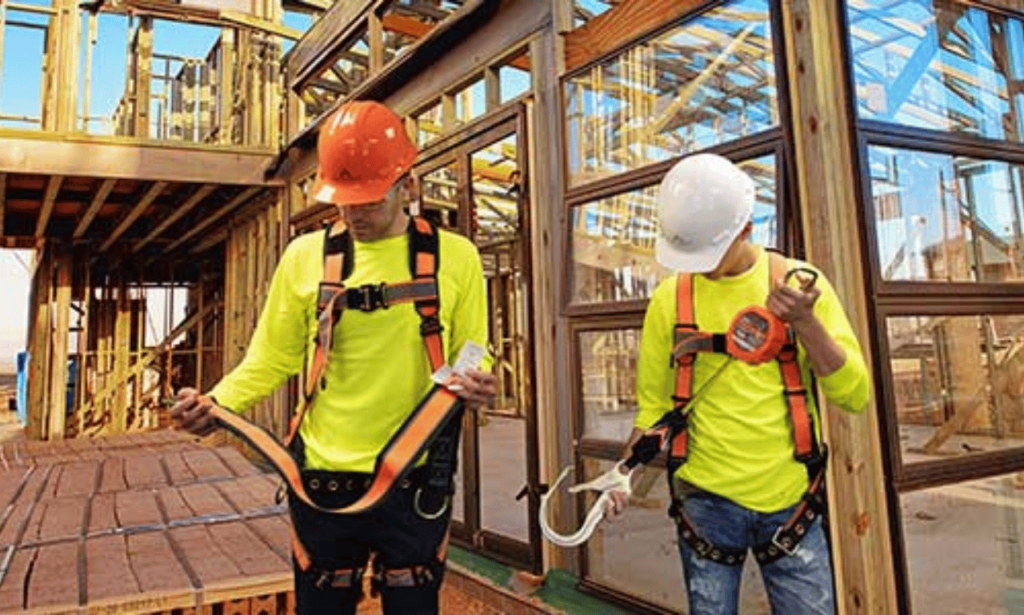
The Occupational Safety and Health Administration (OSHA) plays a vital role in establishing regulations and guidelines to ensure fall prevention on construction sites. These regulations are designed to protect workers and create a safe work environment, particularly when it comes to scaffold safety and construction safety.
Under OSHA regulations, employers are required to implement proper fall protection measures and adhere to specific standards related to scaffolds. These regulations outline the necessary precautions and procedures that must be followed to prevent falls and minimize the risk of injuries.
OSHA Standards for Scaffold Fall Protection
OSHA’s standards regarding scaffold fall protection focus on various aspects of scaffold safety, including design, construction, and maintenance. These standards cover both supported scaffolds, such as bamboo scaffolds and fabricated frame scaffolds, and suspended scaffolds, such as swing stage scaffolds and suspended platforms.
Some key OSHA regulations related to scaffold fall protection include:
- OSHA 1926.451(a): General Requirements â This regulation outlines the general requirements for scaffolds, including proper construction, capacity, access, guardrail systems, and fall protection measures.
- OSHA 1926.451(e): Fall Protection â This regulation specifies the requirements for fall protection on scaffolds, such as the use of guardrail systems, toeboards, and personal fall arrest systems (PFAS).
- OSHA 1926.451(g): Training Requirements â This regulation highlights the importance of providing training to workers involved in scaffold construction, usage, and dismantling, emphasizing the safe work practices and potential hazards they need to be aware of.
Compliance and Creating a Safe Work Environment
Understanding and complying with OSHA regulations regarding scaffold fall protection is essential for employers, workers, and project managers. It ensures that the necessary safety measures are in place to protect workers from falls and minimize the risk of accidents on construction sites.
By implementing OSHA standards, employers can create a safe work environment that prioritizes scaffold safety and construction safety. This includes providing proper fall protection systems, ensuring the correct use of personal protective equipment (PPE), conducting regular inspections, and offering training and education on scaffold safety.
Having a robust scaffold fall protection program that adheres to OSHA regulations not only helps prevent accidents and injuries but also fosters a culture of safety among workers. It demonstrates the employer’s commitment to prioritizing worker well-being and reflects positively on the overall construction project.
Essential Fall Protection Systems
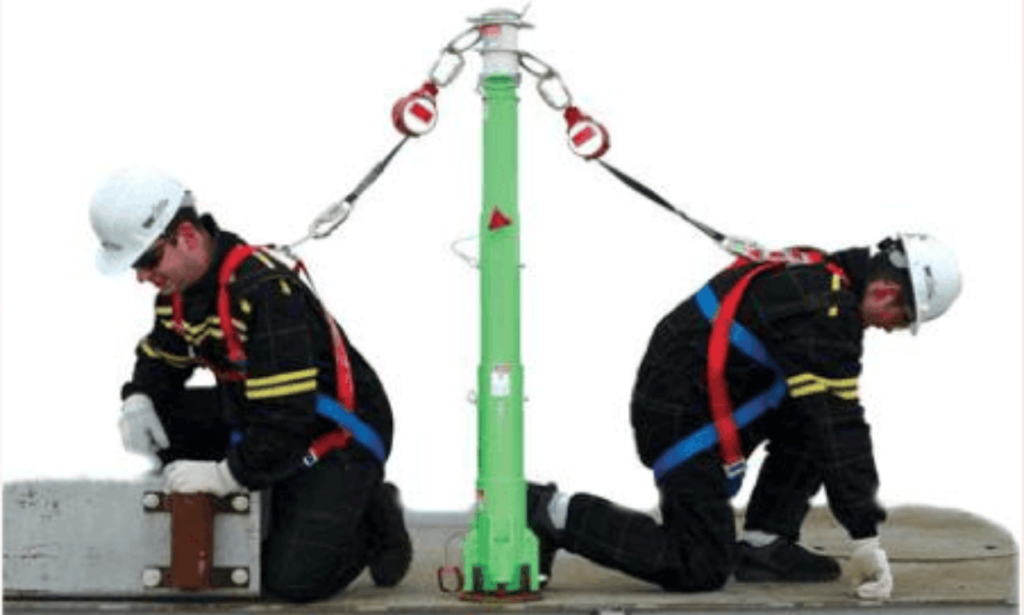
Implementing effective fall protection systems is crucial for safeguarding workers on scaffolds. By utilizing the right fall prevention measures, employers can significantly reduce the risk of falls and protect the well-being of their workers.
There are several types of fall protection systems available, each serving a specific purpose in preventing falls. Let’s explore some of the key options:
1. Guardrails
Guardrails are one of the most common forms of fall protection systems. They are physical barriers placed along the edges of scaffolds to prevent workers from accidentally stepping or falling off the platforms. Guardrails typically consist of a top rail, mid-rail, and toeboard to provide a continuous barrier and ensure worker safety.
2. Safety Nets
Safety nets are another effective fall protection system that can be installed around scaffolds. These nets are designed to catch workers who may fall from height, preventing them from hitting the ground or lower levels of the construction site. Safety nets act as a safety buffer, minimizing the impact of a fall and reducing the likelihood of severe injuries.
3. Personal Fall Arrest Systems
Personal Fall Arrest Systems (PFAS) are specialized equipment that workers wear to protect themselves from falls. PFAS typically include a full-body harness, a lanyard, and an anchor point. If a fall occurs, the harness distributes the fall forces across the body, while the lanyard slows down the fall and prevents the worker from hitting the ground. Anchor points are fixed structures to which the lanyard is attached, providing a secure connection.
Employers should carefully assess the specific needs of their work environment and select the appropriate fall protection systems. In some cases, a combination of different systems may be required to ensure comprehensive fall prevention.
Remember, fall prevention is a shared responsibility. Employers must provide the necessary equipment and training, while workers must actively adhere to safety protocols and properly use the fall protection systems provided.
By implementing essential fall protection systems, employers can create a safer work environment and protect their workers from potentially life-threatening falls.
Personal Protective Equipment: A Key Component
When it comes to safeguarding workers from scaffold-related fall hazards, Personal Protective Equipment (PPE) plays a significant role. The proper use of PPE can greatly enhance fall prevention efforts and minimize the risk of injuries. In this section, we will discuss the essential PPE items that should be worn by workers while working on scaffolds.
The Importance of PPE in Fall Prevention
Personal Protective Equipment acts as a crucial barrier between workers and potential fall hazards. By wearing the appropriate PPE, workers can greatly reduce the risk of falling and its associated consequences. PPE not only protects workers from the physical impact of falls but also helps in minimizing the severity of injuries in the event of a fall.
Some of the essential PPE items that workers should wear on scaffolds include:
- Safety Harnesses: A safety harness is a vital piece of equipment that workers must wear when working at heights. It is designed to distribute the impact force of a fall and prevent free falls.
- Lanyards and Lifelines: Lanyards and lifelines are used in conjunction with safety harnesses to provide additional fall protection. They help in preventing workers from reaching the edge of the scaffold, reducing the risk of falls.
- Hard Hats: Hard hats are essential for head protection in construction environments. They protect workers from falling objects and potential head injuries.
- Safety Glasses: Safety glasses help in protecting the eyes from flying debris, dust, and other airborne hazards that workers may encounter on the scaffold.
- Gloves: Gloves provide hand protection while working on scaffolds. They help in reducing the risk of hand injuries due to sharp objects, rough surfaces, or hazardous materials.
- Non-Slip Footwear: Non-slip footwear is crucial for maintaining stability and preventing slips and trips on scaffolds. It offers better traction and grip on various surfaces, minimizing the risk of falls.
- High-Visibility Clothing: High-visibility clothing ensures that workers are easily visible to others, promoting safety and reducing the risk of accidents on scaffolds, especially in low-light conditions.
Proper Training and Maintenance of PPE
While wearing PPE is essential, proper training on its correct usage and maintenance is equally important. Workers should receive comprehensive training on how to wear, adjust, and inspect their PPE to ensure its effectiveness. Regular maintenance and inspections of PPE are crucial to identify any damages, wear and tear, or issues that may compromise its protective capabilities.
Employers should prioritize the provision of appropriate PPE to workers and educate them on the importance of using it consistently. By combining the use of high-quality PPE with effective fall prevention systems, employers can create a safer work environment and protect their workers from scaffold-related fall hazards.
Training and Education for Scaffold Fall Protection
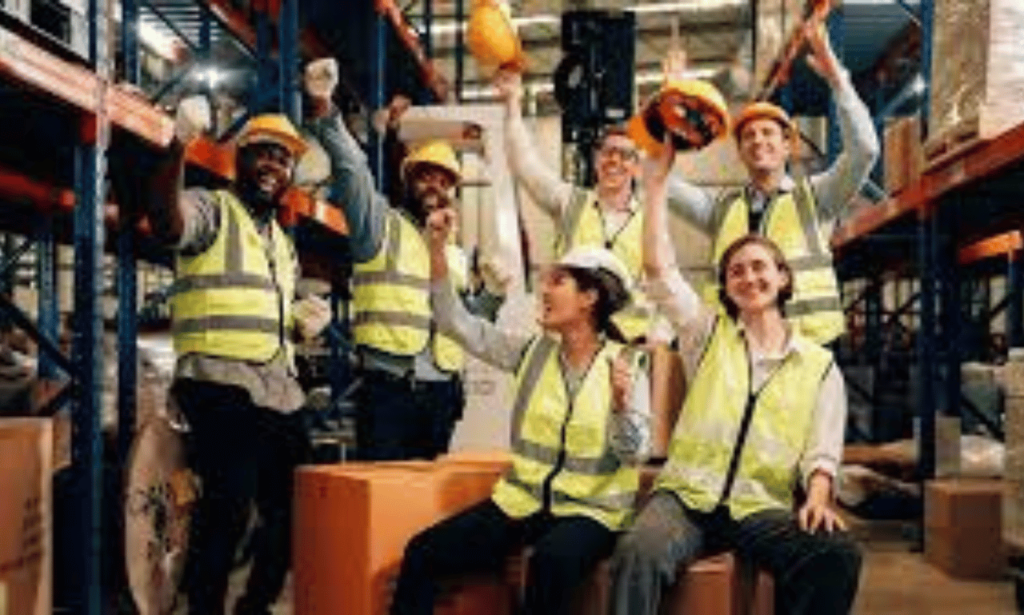
Proper training and education play a vital role in ensuring workplace safety and construction safety when it comes to scaffold fall protection. It is essential to provide workers with comprehensive training on fall prevention techniques, scaffold safety procedures, and hazard recognition. By equipping workers with the necessary knowledge and skills, employers can significantly reduce the risk of accidents and create a safe working environment.
During the training process, emphasis should be placed on familiarizing workers with the proper usage of fall protection equipment, such as harnesses, lanyards, and anchorage systems. Workers should understand how to inspect and maintain their personal protective equipment regularly to ensure its effectiveness in protecting against falls. Additionally, they should be trained on identifying potential hazards associated with scaffolds, such as unstable platforms or inadequate guardrails, and know how to report these hazards to their supervisors.
Creating a Culture of Safety
Training alone is not sufficient to guarantee workplace safety. Employers must also work towards cultivating a culture of safety within their organizations. This involves creating an environment where workers feel empowered to prioritize their safety and the safety of their colleagues.
One way to foster a culture of safety is through regular communication and engagement. Employers should effectively communicate safety policies and procedures to workers and encourage them to ask questions or provide feedback. Providing opportunities for workers to participate in safety training sessions, workshops, or safety committee meetings can also enhance their knowledge and engagement.
Furthermore, supervisors and managers have a crucial role to play in promoting workplace safety. They should lead by example, consistently practicing safe work habits and enforcing safety protocols. Recognizing and rewarding employees for their commitment to safety can also reinforce the importance of adhering to safety measures.
Continual Learning and Improvement
To ensure ongoing workplace safety, it is essential to encourage a culture of continual learning and improvement. Employers should regularly assess the effectiveness of their training programs and make necessary adjustments to address emerging safety concerns or incorporate new industry practices.
Additionally, employers should provide refresher training sessions to reinforce previously learned concepts and update workers on any changes in safety regulations or best practices. By investing in the ongoing education of their workforce, employers can keep safety at the forefront and minimize the risk of accidents related to scaffold fall hazards.
Conducting Regular Inspections and Maintenance
Regular inspections and maintenance are essential for ensuring workplace safety and scaffold safety. By conducting thorough inspections, identifying potential hazards, and promptly addressing any issues, employers can create a safe working environment that minimizes the risk of accidents and falls.
Inspections should be carried out regularly to ensure the structural integrity of scaffolds and the effectiveness of fall prevention measures. This involves examining all components of the scaffold, such as the frames, platforms, guardrails, and access points, to verify their stability and safety.
Identifying Potential Hazards
During inspections, it is crucial to identify and address any potential hazards that could compromise scaffold safety. This can include checking for signs of wear and tear, damaged or missing components, and any signs of instability or weakness.
Employers should also assess the surrounding environment for factors that may impact scaffold safety, such as adverse weather conditions or nearby hazards that could cause accidents, falls, or collapses.
Promptly Addressing Issues
If any issues or hazards are identified during inspections, it is essential to take immediate action to address them. This may involve repairing or replacing damaged components, reinforcing weak areas, or adjusting the scaffold’s positioning to ensure stability.
By promptly addressing issues, employers can prevent potential accidents and create a safer workplace for their workers. It is also crucial to document all inspections and corrective actions taken, as this helps demonstrate compliance with safety regulations and provides evidence of a proactive approach to maintaining scaffold safety.
Regular inspections and maintenance not only help prevent accidents and injuries but also contribute to the overall efficiency and productivity of construction projects. By prioritizing scaffold safety, employers can create a working environment where workers can confidently perform their duties without compromising their well-being.
Conclusion
In conclusion, prioritizing scaffold fall protection is crucial in maintaining construction safety and workplace safety. By adhering to the established OSHA regulations and guidelines, employers can ensure that proper fall prevention systems are in place to mitigate the risks associated with working on scaffolds.
Implementing essential fall protection systems, such as guardrails, safety nets, and personal fall arrest systems, further enhances worker safety by preventing falls from occurring. Equally important is the provision of personal protective equipment (PPE) and comprehensive training to ensure that workers are well-equipped and educated on scaffold safety protocols.
Regular inspections and maintenance play a significant role in identifying potential hazards and addressing them promptly. By conducting thorough assessments and promptly addressing any issues, employers can maintain the structural integrity of scaffolds, reinforcing workplace safety.
In summary, creating a safe working environment through scaffold fall protection measures is not only necessary for compliance but also for safeguarding the well-being of workers. Construction sites can minimize the risk of falls by implementing the appropriate safety measures and promoting a culture of workplace safety. By prioritizing scaffold fall protection, employers demonstrate their commitment to ensuring the safety and welfare of their workforce.
FAQ
What are the OSHA regulations regarding scaffold fall protection?
OSHA has established specific regulations and guidelines to ensure fall prevention on construction sites. The regulations cover various aspects such as scaffold design, installation, use, and employee training. Some key regulations include 29 CFR 1926.451, which outlines scaffold safety requirements, and 29 CFR 1926.501, which covers fall protection systems criteria.
What are the common scaffold hazards that can pose a risk to worker safety?
There are several common scaffold hazards that workers should be aware of, including instability, inadequate fall protection, improper access, falling objects, and electrical hazards. These hazards can result in serious injuries or fatalities if proper safety measures are not in place. Employers should prioritize identifying and mitigating these risks to ensure a safe working environment.
What are the different types of fall protection systems for scaffolds?
There are various fall protection systems available for scaffolds, including guardrails, safety nets, and personal fall arrest systems (PFAS). Guardrails provide a physical barrier to prevent falls, while safety nets can catch workers in the event of a fall. PFAS, such as harnesses and lanyards, allow workers to be safely secured to an anchor point, minimizing the distance and impact of a fall.
What personal protective equipment (PPE) should workers wear on scaffolds?
Workers on scaffolds should wear appropriate PPE to enhance fall prevention. This typically includes hard hats to protect against falling objects, slip-resistant footwear to prevent slips and trips, and high-visibility clothing to increase visibility and awareness. Additionally, workers utilizing personal fall arrest systems should wear harnesses and lanyards as part of their PPE.
How important is training and education for scaffold fall protection?
Training and education are crucial for ensuring worker safety when working on scaffolds. Workers should receive comprehensive training on fall prevention techniques, scaffold safety procedures, and hazard recognition. Employers play a vital role in providing this training and promoting a culture of safety through ongoing education. Workers should be familiar with the specific scaffold they are working on and understand the risks associated with their tasks.
Why is conducting regular inspections and maintenance of scaffolds important?
Regular inspections and maintenance are essential to ensure the structural integrity and proper functioning of scaffolds. Inspections help identify any potential hazards or issues that could compromise worker safety. Employers should conduct thorough inspections before each use, after any alterations or adverse weather conditions, and periodically throughout the project. Prompt maintenance and repairs should be carried out to address any identified issues.
